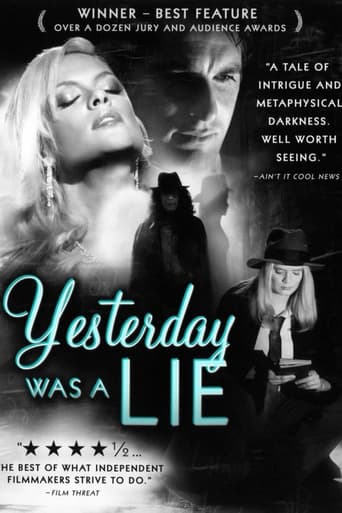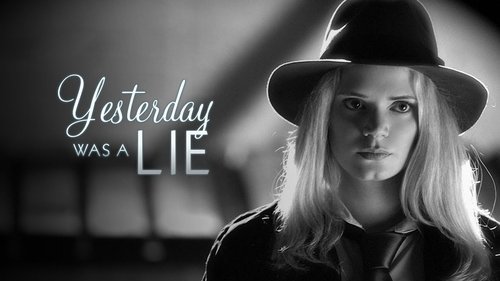




Takes itself way too seriously
Crappy film
The performances transcend the film's tropes, grounding it in characters that feel more complete than this subgenre often produces.
View MoreThis is a coming of age storyline that you've seen in one form or another for decades. It takes a truly unique voice to make yet another one worth watching.
View MoreOh boy, oh boy! I should have been more careful when choosing what movie to watch. Truth to be said, I 'fell' for some excellent reviews of this film, and only 'post-factum' while trying to understand why I disliked it so much I discovered that all the people who on the Message Board who wrote rapturous messages of how great that film was wrote only one post each throughout all their membership 'carrier' at the IMDb and, besides, there's a suspiciously large amount of '10' votes which is very rare even for Oscar-awarded masterpieces that even though usually have the majority of good votes spread in the 8 to 10 range, but almost never only '10s'. Which inevitably lead me to the conclusion that most of the good votes for that film were fake. I believe that any film-maker should have enough self-respect rather than ask from his friends, colleagues, etc. and even voting by himself under different user names for the movie that he himself considers to be bad, otherwise, why should he bother to making such charade?Me and my wife were expecting some 'brainy' movie with interesting ideas, since we both love science fiction and interesting non- standard approach. That's why we also love David Lynch. It seems to me that the film maker tried to emulate David Lynch, but failed miserably, since despite good camera work the script was pretty amateurish and convoluted. Even two attractive lead actresses could not save the film, even though, as some consolation for the wasted time, it was pleasant to watch them. Some of the background music was clearly 'borrowed' from Pink Floyd's Shine on You Crazy Diamond. This being said, I want to wish James Kerwin success in his future endeavors. He haven't done any serious work so far so any beginning is not easy. Along with that I have just one request: please, no more fake reviews, OK? Have some self-respect, man!
View MoreThis film falls short to deliver a Twilight Zoneesque feel. Unless you're a Jungian or are familiar with Fred Hoyle and anything psychological or science for that matter, then this film will pass over your head. Love the noir atmosphere but the characters aren't believable in telling a noir style story. Chase Masterson is incredibly talented and gorgeous,and makes an attempt to be Virgil and walk Kipleigh Brown through a scientific Dante's Inferno. If this film were a student project for an astrophysics class, then it would have succeeded. Unfortunately it was presented as an actual film at Cannes. As a lover of science fiction, especially Twilight Zone and Star Trek I delve into this film expecting for a great deal of human factor drama and a blend of 1950's murder mystery and suspense. Instead I received a puzzle with pieces that are missing. If you watch this film research Fred Hoyle or read October First Is Too Late or keep the Sixth Sense and Dante's Inferno in mind.
View Morethe plot seemed to be a mess.Somewhere the story was lost - and the movie relied solely on trying to be a film-noir 0 which it couldn't and trying to rely on it's characters or actors to bring out the interest - which it lacks.The two female leads didn't initiate any real chemistry and if it was to be a lesbian love story, there was none.While the singer looked great and performed great on-stage - the rest of her presence didn't offer anything.The other characters pop in and out for no reason that is memorable.In fact the entire story is far from memorable.The only thing that I did like was the lighting and camera work and music.Plot, acting and story failed for trying to be too much and offering too little.
View MoreThis is not a movie to miss if you hear of it coming to a convention or festival near you. See it for free before you have to pay for it! There are many types of film fanatics that should love this movie. It can be compared to so many different types of films and film makers. All Sci-Fi fans should like the film because of the alternate realities/parallel universe themes. You will also notice the film takes on a very non-linear plot. For some, this is confusing. However, it only adds to the delight of watching this film. This non-linear film making reminds me of films by Quentin Tarantino. This film could certainly be one that can viewed multiple times and enjoyed over and over.This film was originally shot in color and then desaturated in post production. The black and white or "noir" aspect of the film adds its own personality. Color would not have worked for this film because it has a 1940-1950's "Bogart" theme to it. You see Hoyle play the part of the investigator playing the part of the crime detective so well. She plays it as a female; which no doubt, offers a refreshing way to see a detective role played.The convention I attended was the first Con for me. When I saw the Films listed I read more about this film and it looked very interesting. It met and beat all my expectations. I had the chance to meet Chase Masterson playing the Singer and Director James Kerwin. There was a great panel on the film and many questions were answered. Take a look at the cast and you will notice some familiar faces in the Sci-Fi family. If I could only see this film in the area again or buy a DVD I would! See it for free while you can!Have an open mind and see it at a convention or festival now!
View More